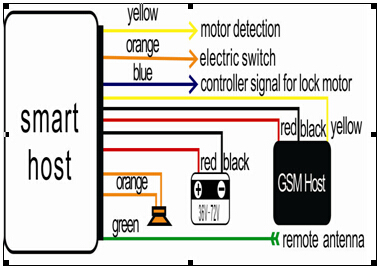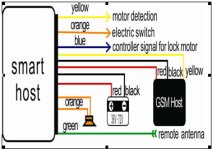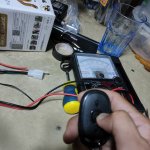- Joined
- Jul 31, 2012
- Messages
- 61
I have controllers that don't have anti-theft plugs and would like to implement them ; what I've found is that, generally, the signals are :
[Red(positive)+ black(power)] on one plug,
[red(e-start) + Blue(motor Lock signal) + Green(Motor Lock)] on the other plug
[edit : can be on same plug, but the same 5 wires always come up with more or less the same description]
what voltage do anti-theft devices use? 48v or 60v (or whatever voltage the battery is), 12v or 5v coming from controller?
I know nothing about where those end up on the controller side ; are there generic pads? How does the motor lock work?
Could it be possible to hack a controller by activating all 3 negative mosfets gates to lock it? Any other ideas (could be with an arduino...)?
[Red(positive)+ black(power)] on one plug,
[red(e-start) + Blue(motor Lock signal) + Green(Motor Lock)] on the other plug
[edit : can be on same plug, but the same 5 wires always come up with more or less the same description]
what voltage do anti-theft devices use? 48v or 60v (or whatever voltage the battery is), 12v or 5v coming from controller?
I know nothing about where those end up on the controller side ; are there generic pads? How does the motor lock work?
Could it be possible to hack a controller by activating all 3 negative mosfets gates to lock it? Any other ideas (could be with an arduino...)?





